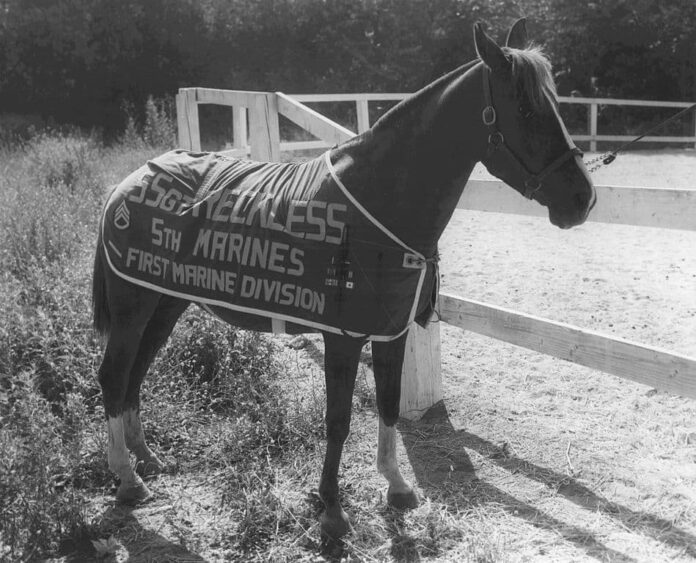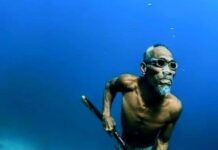When it comes to horses, not many of us think about war horses since these noble steeds are back in history. We all know that horses have always been a vital part of men’s life from everyday life to war. Many of them have sacrificed their lives for the sake of men’s victory, and they should be remembered. That is why there are many horses whose names were carved in history along with their statues built. We bring you 10 famous war horses along with their history today, so let’s take a look.
1Bucephalus
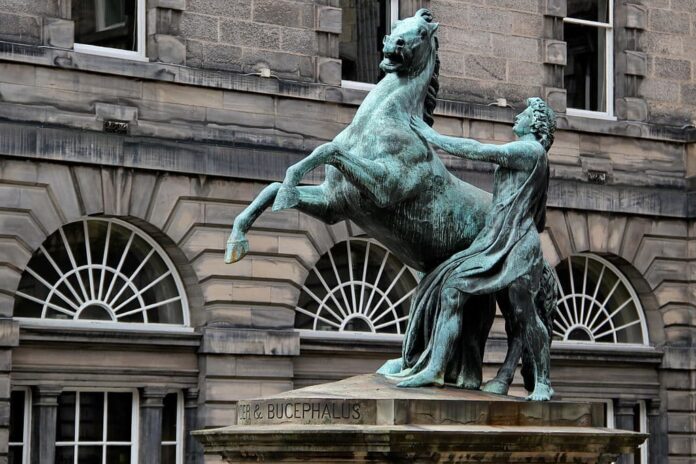
Known as the horse that could not be tamed, Bucephalus could not be ridden by anybody until he met Alexander the Great. At the age of only 13 years old, Alexander was the only person who could approach Bucephalus. Legend has it that Alexander would speak softly to the stallion, and Bucephalus would lower his head and allow Alexander to ride him. People described the horse as a massive creature with a massive head, it had a black coat with a large white star on its brow.
Bucephalus had fought in numerous battles with Alexander the Great, and they had a great history with each other. There was this one time when a group of Persians kidnapped Bucephalus. Alexander threatened to destroy all of Persia and slaughter every one of its inhabitants unless the captors returned to Bucephalus immediately. And immediately they returned Bucephalus back to the warrior.
This fierce noble steed succumbed to injuries sustained during the Battle of Hydaspes in 326 BC. That was when Alexander fought the Indian King Porus in what is now the modern Punjab Province of Pakistan. As for Bucephalus’ name, it means “ox’s head” due to the branding mark depicting the ox’s head on his haunch. A loyal steed indeed, and that is why Alexander built a town in Pakistan called Bucephalus in memory of this noble steed.
2Chetak
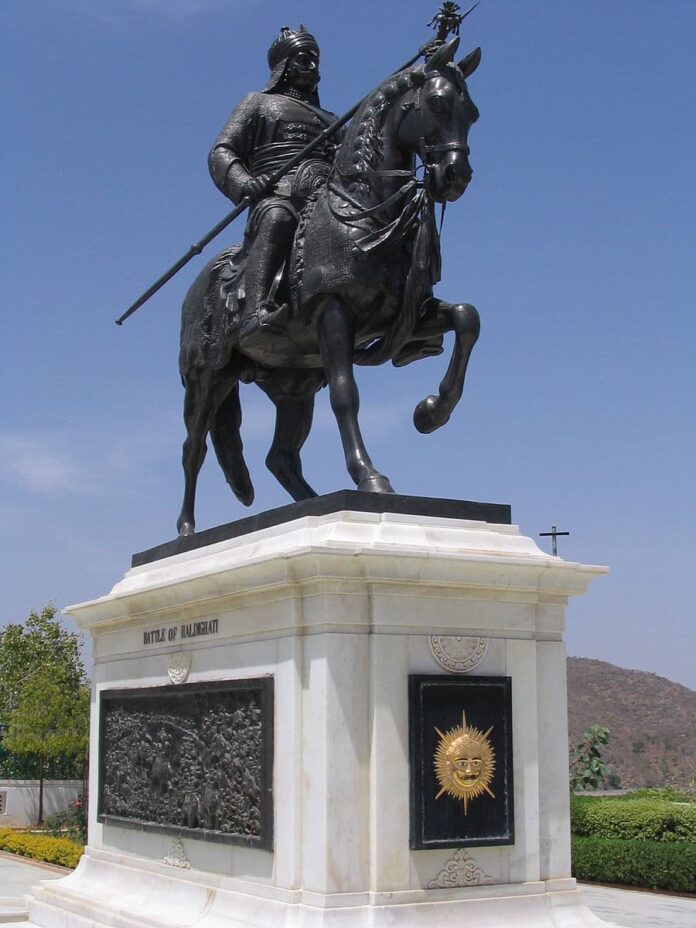
Chetak or Cetak was the name of the stallion that belonged to the Rajput King of India, Maharana Pratap. Legend has it that although wounded, Chetak still carried his master safely away from the battle. The stallion then died of his wounds from the battle of Haldighati fought between Rajputs and Mughals in 1576. The King loved Chetak so much that he erected a monument to it in the Rajsamand district in the Indian state of Rajasthan. Not as famous as other war horses in history, but Chetak was one loyal steed to his master.
3Cincinnati
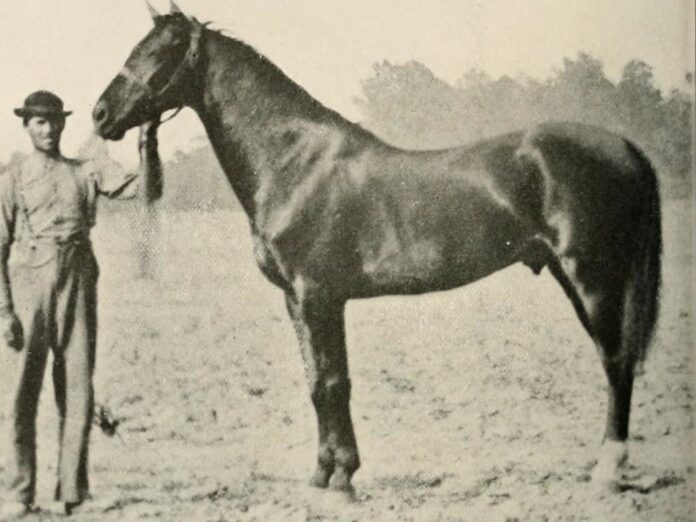
Thoroughbred is the type special horse breed best known for racing, and Cincinnati was the son of the fastest Thoroughbred in the U.S. This stallion had a great reputation, and he was General Ulysses S. Grant’s most famous horse during the American Civil War. Had been tall, handsome, powerful, and exceptionally strong, Cincinnati was the perfect picture of a war horse. Grant rode him in a number of battles, and the horse died in 1878 on the farm of Admiral Daniel Anmen in Maryland.
4Comanche
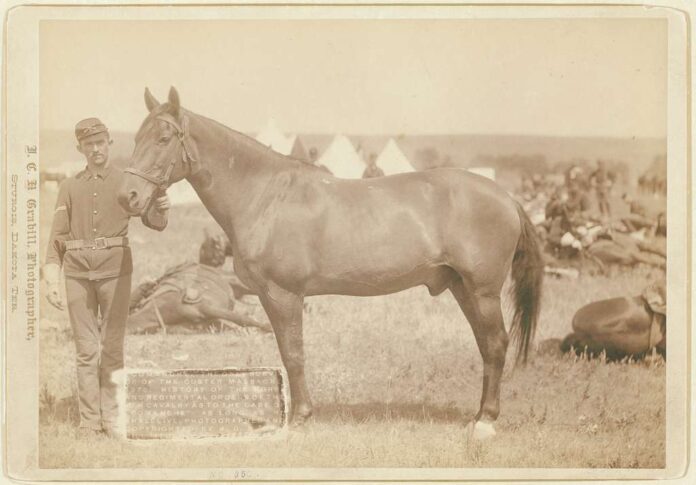
Comanche was a very brave mustang horse who was wounded so many times but still exhibited his toughness in battles. There was this one time when the Comanche was wounded in the hindquarters by an arrow shot by the Comanche tribe. Bravely, he still continued to carry Captain Keogh in the fight. The U.S Army bought Comanche in 1968, and he retired in 1878 after a severe injury in the Battle of the Little Bighorn. Our steed was badly wounded while Captain Keogh, his detachment, was killed.
After Comanche spent a whole year recuperating, he never fought again. Instead, he took part in various special ceremonies and parades as a special guest. Comanche died of colic in 1891, and he was among only four horses in the United States to receive a military funeral. As for his remains, they were preserved and on display at the University of Kansas Museum of Natural History.
5Copenhagen
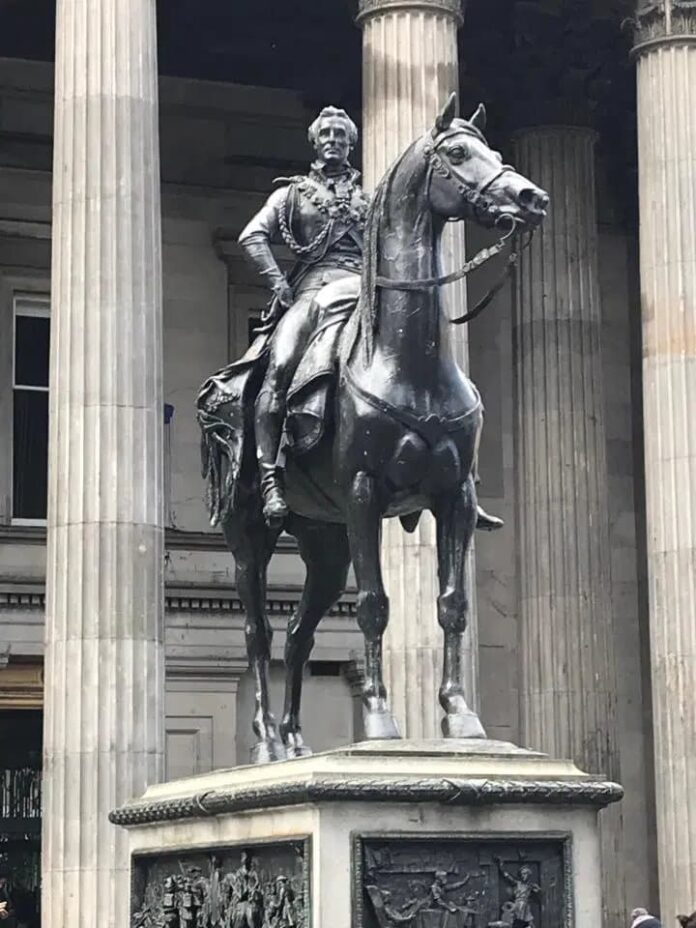
Just like most war horses, this one also got his name from the battle in which he had a triumph. After the second battle of Copenhagen where the British were victorious, our stallion here received his name. Copenhagen was not only a war steed but also a racehorse who won many races as well. Duke of Wellington bought the horse in 1813, and soon he became so fond of this vicious stallion. There are two war horses in this list who was in the Battle of Waterloo, and Copenhagen won that battle.
The funny thing was that Copenhagen attempted to kick the Duke in the head when he patted the horse’s rump. Fortunately for both of them, Copenhagen missed. Imagine winning the battles of bullets and cannons just to only be finished by a kick from the horse that brought you to safety. That was a serious matter of life and death there. As years went by, Copenhagen had become softer and he would approach strangers in search of bread and treats.
This hero died in February, 1836 at the age of 28 years old. His grave site is marked with a marble headstone to dedicate to his bravery and achievements. Wellington quoted, “There may have been many faster horses, no doubt many handsomer, but for bottom and endurance I never saw his fellow.” As for Copenhagen’s head, it was cast in bronze and put on display at Wellington College.
6Kasztanka

Meaning Chestnut in Polish, Kasztanka belonged to Marshal Josef Pilsudski who was a Polish War hero. Just like the famous Sergeant Reckless, Kasztanka was also a brave mare who had been in countless battles. She carried her master bravely in many battles of the Polish Legions on the side of Austro-Hungary and Germany during World War I. Commandant Josef rode his faithful companion for 13 years until her death.
The unique thing about Kasztanka is that she only acknowledged and listened to her master. She somehow hated artillery fire, but she remained controlled and obedient under those difficult situations when her master asked. It is not every day you could find a stallion that listens to you despite its fear. Kasztanka died in 1927, and they buried her remains in a park at the barracks of the 7th Uhlan Regiment.
7Marengo
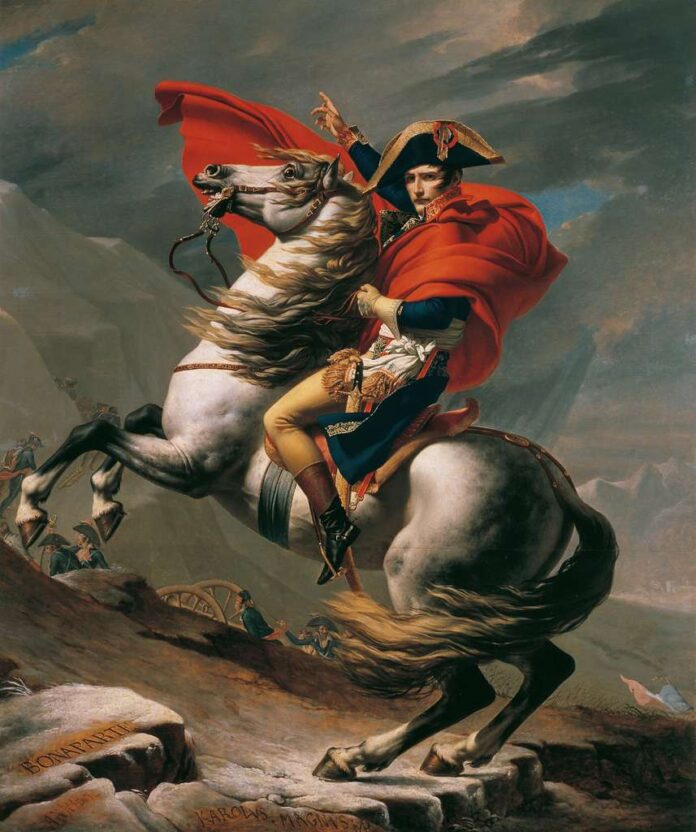
Named after his astounding capabilities in the Battle of Marengo, this noble steed was one of the most famous horses in history. This carrier of Napoleon Bonaparte was most notable for his long expenditure of over 5,600 kilometers from Paris to Moscow. Marengo accompanied this French emperor during many battles, the most famous of which was the Battle of Waterloo in 1815. Oddly enough, this Egyptian stallion was more famous in England than in France.
Back to the Waterloo Battle, William Petre captured Marengo and brought him back to the United Kingdom. He was 27 years old, and he stayed in England till his last breath 11 years later. Despite the fact that he carried Napoleon to many battles, his name was nowhere to be found among Napoleon’s 150 horses. In fact, the story of Marengo appears to have no historical or nostalgic support in French records at all. Even his skeletons are now on display at the National Army Museum in Chelsea, London.
8Palomo

Most war horses are not the handsome type, but this one is a totally different case. Palomo was a tall white horse that accompanied Simon Bolivar aka the Liberator of Latin America. This magnificent noble steed was so fine-looking, and his tail almost reached the ground. During Simon’s campaigns of liberation, Palomo carried his master back and forth across Latin America for many years. We all know that beauty always comes with flaws, and so did the beauty of Palomo. He died of exhaustion during one of the long marches that featured in Bolivar’s wars. Palomo’s horseshoes and other effects are on exhibit in the Museum of Mulalo, and his burial is next to the hacienda chapel.
9Sergeant Reckless
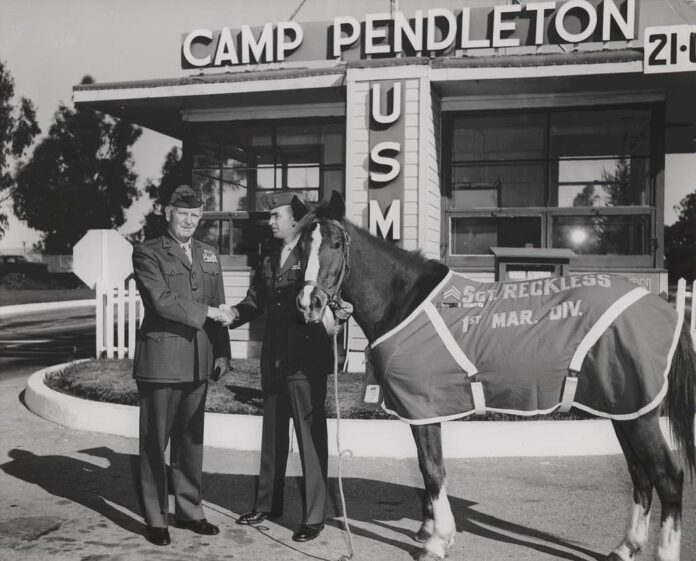
Not all war horses have to be male, Sergeant Reckless was a perfect example of a mare who could to go war. As a matter of fact, she also held an official rank in the United States military as well. This Mongolian horse breed sure carved her name in history as well as the hearts of the marines she served. Reckless served in numerous combat actions during the Korean War, and her remarkable service was unforgettable.
During the wars, our precious steed carried antitank ammunition to the front lines fearlessly in the presence of guns and cannon fire. The best part was that she was famous for her intelligence and her solo missions with no need for company. She often traveled to deliver supplies to the troops on her own without a need for a handler. That was in the Battle of Outpost Vegas where she carried 4,100 kilograms of ammunition to the front lines. In just one day, with 51 solo trips all by herself.
Reckless became Sergeant Reckless in 1954 followed by her retirement. Sergeant Reckless was friendly and intelligent, and she was more like a soldier than a horse. She would eat and drink anything from scrambled eggs and pudding to soda and beer. Sergeant Reckless died in 1968, and her bronze statue now stands at the National Museum of the Marine Corps in Virginia.
10Traveller

This is a gray American Saddlebred who was the favorite stallion of General Robert E. Lee. He was a Confederate Army Commander during American Civil War, and Traveller was always by his side. Lee purchased Traveller in 1862, and the steed was famous for his phenomenal speed, strength, and courage. Since then, Lee rode this horse of great stamina in many battles since the horse itself was so brave.
Robert E. Lee passed away in 1870, and Traveller was led behind the caisson bearing the General’s casket. A year later, Traveller stepped on a rusty nail and developed tetanus which he was put down by gunshot. There was no treatment for tetanus at the time, so killing him was the only way to end his suffering. His remains were buried in a wooden box encased in concrete next to the Lee Chapel.
Related Post: Most Handsome Horse Breeds

